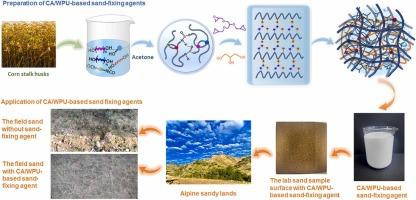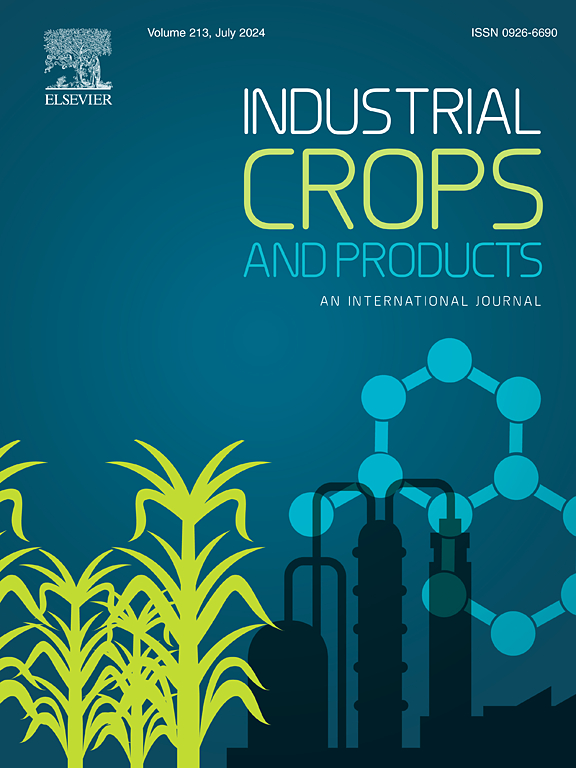Degradable cellulose acetate/waterborne polyurethane-based sand-fixing agents with excellent antifreezing properties
IF 5.6
1区 农林科学
Q1 AGRICULTURAL ENGINEERING
引用次数: 0
Abstract
Chemical sand-fixing agents with excellent antifreezing properties can effectively mitigate issues related to wind-blown sand and sand burial in alpine semiarid sandy areas. This study focuses on modifying cellulose acetate (CA)-based waterborne polyurethane (WPU) sand-fixing agents by incorporating glycerol triglycidyl ether (GTE) and glycerin (GL). These additives can react with the hydroxyl groups in CA, forming hydrogen and ether bonds in the CA/WPU system, thereby improving the antifreezing abilities of the sand-fixing agents. Furthermore, the free hydroxyl groups in the modified CA/WPU system can interact with SiO2 in sand, leading to the formation of a strong dual-network structure. Compared with competing products, the CA/WPU-based sand-fixing agents developed in this research showed superior antifreezing and durability abilities, enhanced resistance to wind-blown sand and water, as well as a certain degree of water retention durability. The primary volatile substances of thermal degradation include water vapor, NH3, and CO2. CA/WPU/GTE and CA/WPU/GTE/GL0.5 (CA(-OH)/GTE/GL = 2/1/1) formulations exhibited superior degradation performance compared with CA/WPU/GL and CA/WPU/GTE/GL1. The consolidation strengths of the CA/WPU/GTE and CA/WPU/GTE/GL0.5 layers remained stable after exposing to 27°C and −20°C for 14 days. With a consolidation strength of 1.76 MPa at 27°C, CA/WPU/GTE is ideal for alpine regions where plant survival is notably challenging. Conversely, CA/WPU/GTE/GL0.5, which had an appropriate consolidation strength of 1.56 MPa at 27°C, is fitting for alpine areas with existing plant life. The findings of this study contribute to sustainable production and cost savings, offering new possibilities for advancing biodegradable sand-fixing agents with outstanding antifreezing properties.

求助全文
约1分钟内获得全文
求助全文
来源期刊

Industrial Crops and Products
农林科学-农业工程
CiteScore
9.50
自引率
8.50%
发文量
1518
审稿时长
43 days
期刊介绍:
Industrial Crops and Products is an International Journal publishing academic and industrial research on industrial (defined as non-food/non-feed) crops and products. Papers concern both crop-oriented and bio-based materials from crops-oriented research, and should be of interest to an international audience, hypothesis driven, and where comparisons are made statistics performed.
 求助内容:
求助内容: 应助结果提醒方式:
应助结果提醒方式:


